In the night sky this week, you can see 4 of the bright planets around 7 PM. Venus in the southwest, Venus with Mercury, Jupiter overhead, and red Mars in the east. The moon will pass along these planets this week.
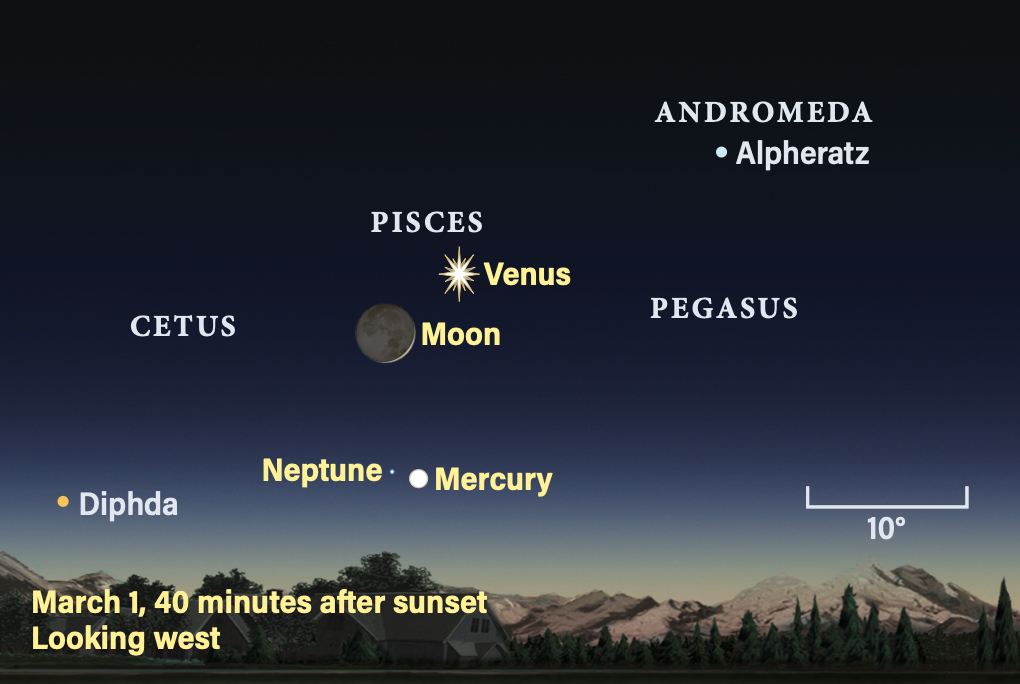
Venus shines in the southwest for three hours before setting. As the second brightest object in the night sky, it reigns supreme.
Mercury pops itself from the horizon right below Venus. Start to look around 30 minutes after sunset, binoculars will help. On Saturday, the slim crescent moon will be below Venus and above Mercury. The distant blueish Neptune will be to the left, but you will need a telescope to see the planet.
Saturn is now out of view as it swings behind the sun.
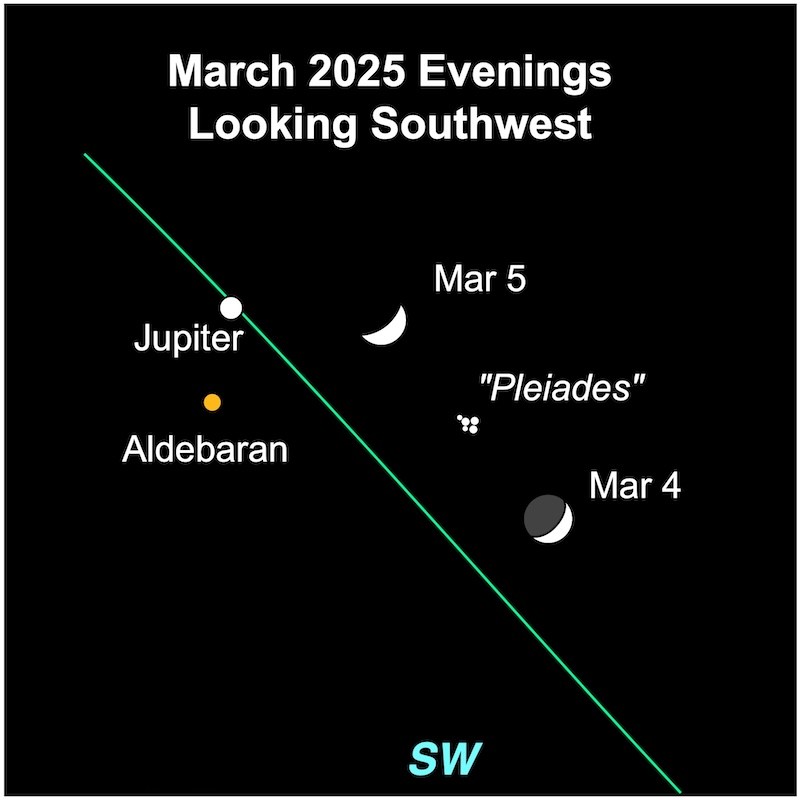
Jupiter is hanging out between the horns of Taurus the Bull next to the orange star Aldebaran (the eye of the bull). It is hanging around high in the southwest.
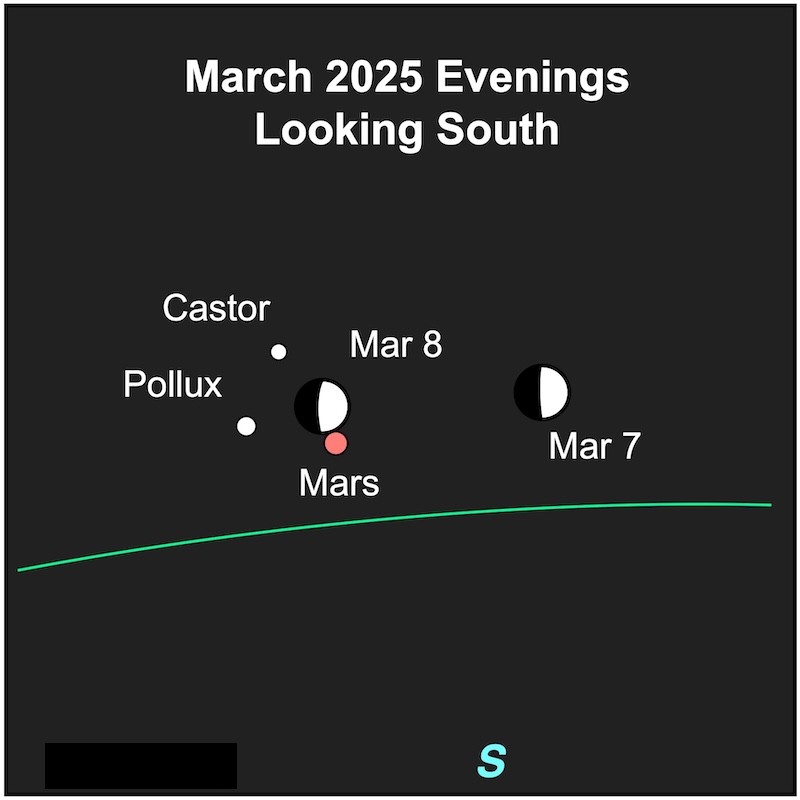
Mars is in the constellation of Cancer near the bright stars Castor and Pollux in Gemini in the east. You cannot miss it, due to its red color. The red-orange planet is overhead around 9 PM.
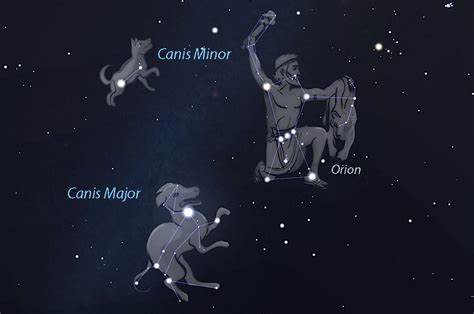
Orion, Canis Major, and Canis Minor are one of the most magical sights in the southern part of the sky. It starts with Orion, the Hunter, which is in the south around 9 PM. You’ll spot his famous belt—three bright stars lined up perfectly in a row. Above the belt is Betelgeuse, a huge red star that has a warm, reddish glow, while below it is Rigel, a brilliant blue-white star that shines like a diamond. Orion is hard to miss and is often the first constellation people recognize in the winter.
Not far behind Orion comes Canis Major, the “Greater Dog.” This constellation is home to Sirius, the brightest star in the sky. Sirius steals the show with its intense, bluish-white sparkle. It’s like the sky’s spotlight! In mythology, Canis Major is one of Orion’s loyal hunting dogs, always by his side as he roams the celestial hunting grounds.
Trailing after is Canis Minor, the “Lesser Dog.” It’s a smaller constellation, but it has Procyon, a bright, cheerful-looking star. Even though Canis Minor doesn’t have as many standout stars as Canis Major, it still plays an important role in completing the picture. You can find it a bit to the northeast of Orion, lining up neatly with Sirius and the Hunter’s belt.
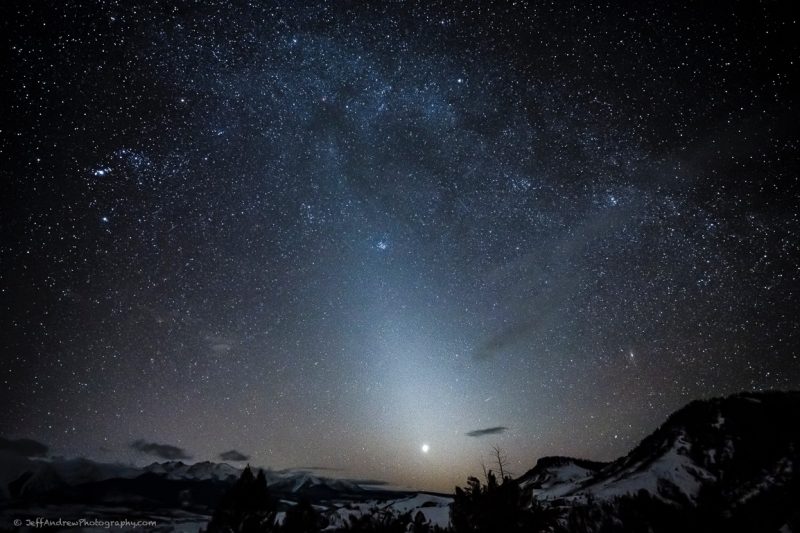
This is the time of the year you will notice the Zodiacal light. A couple of hours after the sun has set, there may be an eerie glow coming up from the horizon. This is sunlight (which is well below the horizon) reflecting off dust particles in space.
Enjoy this stunning celestial lineup throughout the week of March 7th! The universe has quite a spectacle in store for us.
